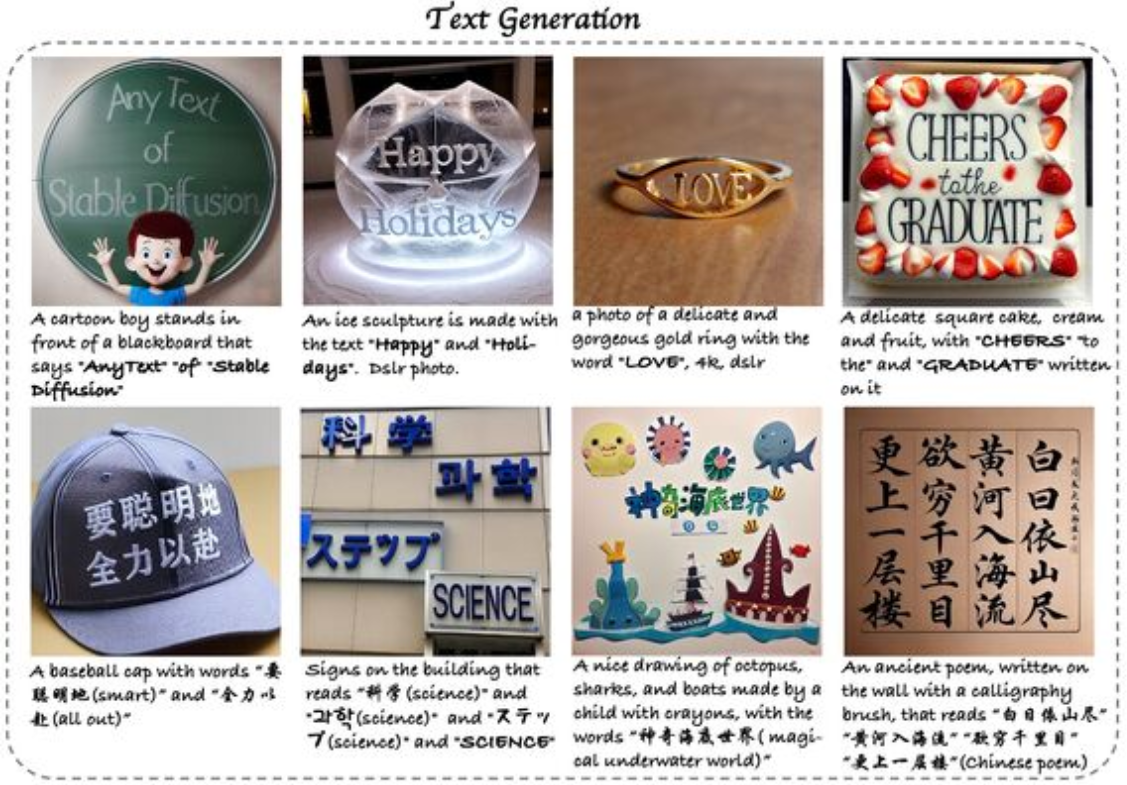In a significant breakthrough, Alibaba has successfully addressed the long-standing challenge of integrating coherent and readable text into images with the introduction of AnyText. This state-of-the-art framework for multilingual visual text generation and editing marks a remarkable advancement in the realm of text-to-image synthesis. Let’s delve into the intricacies of AnyText, exploring its methodology, core components, and practical applications.
Also Read: Decoding Google VideoPoet: A Comprehensive Guide to AI Video Generation

Core Components of Alibaba’s AnyText
- Diffusion-Based Architecture: AnyText’s groundbreaking technology revolves around a diffusion-based architecture, consisting of two primary modules: the auxiliary latent module and the text embedding module.
- Auxiliary Latent Module: Responsible for handling inputs such as text glyphs, positions, and masked images, the auxiliary latent module plays a pivotal role in generating latent features essential for text generation or editing. By integrating various features into the latent space, it provides a robust foundation for the visual representation of text.
- Text Embedding Module: Leveraging an Optical Character Recognition (OCR) model, the text embedding module encodes stroke data into embeddings. These embeddings, combined with image caption embeddings from a tokenizer, result in texts seamlessly blending with the background. This innovative approach ensures accurate and coherent text integration.
- Text-Control Diffusion Pipeline: At the core of AnyText lies the text-control diffusion pipeline. It is what facilitates the high-fidelity integration of text into images. This pipeline employs a combination of diffusion loss and text perceptual loss during training to enhance the accuracy of the generated text. The result is a visually pleasing and contextually relevant incorporation of text into images.
AnyText’s Multilingual Capabilities
A notable feature of AnyText is its ability to write characters in multiple languages, making it the first framework to address the challenge of multilingual visual text generation. The model supports Chinese, English, Japanese, Korean, Arabic, Bengali, and Hindi, offering a diverse range of language options for users.
Also Read: MidJourney v6 Is Here to Revolutionize AI Image Generation

Practical Applications and Results
AnyText’s versatility extends beyond basic text addition. It can imitate various text materials, including chalk characters on a blackboard and traditional calligraphy. The model demonstrated superior accuracy compared to ControlNet in both Chinese and English, with significantly reduced FID errors.
Our Say
Alibaba’s AnyText emerges as a game-changer in the field of text-to-image synthesis. Its ability to seamlessly integrate text into images across multiple languages, coupled with its versatile applications, positions it as a powerful tool for visual storytelling. The framework’s open-sourced nature, available on GitHub, further encourages collaboration and development in the ever-evolving field of text generation technology. AnyText heralds a new era in multilingual visual text editing, paving the way for enhanced visual storytelling and creative expression in the digital landscape.




